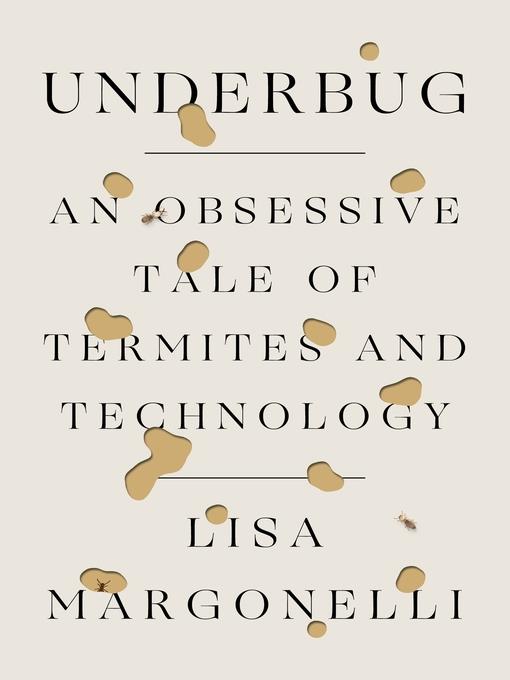
Underbug
An Obsessive Tale of Termites and Technology
- اطلاعات
- نقد و بررسی
- دیدگاه کاربران
نقد و بررسی

May 21, 2018
Termites, a group of insects closely related to cockroaches and responsible for up to $20 billion in property damage in the United States each year, make for an unlikely but fascinating protagonist in the capable and creative hands of science journalist Margonelli (Oil on the Brain). She uses the termite taxonomy as a way to address questions with “evolutionary, ecological and existential implications.” Her far-ranging work touches on the nature of individuality, the use of drones by the military, the applicability of concepts of good and evil to science, and the creation of biofuels created using the termite gut, among other topics. Margonelli brings all of this to light by making complex, cutting-edge science understandable to the general reader, while also conveying the excitement, frustration, and plain drudgery inherent in the scientific endeavor. She provides firsthand descriptions of field and laboratory work throughout the world, from Cambridge, Mass., to Windhoek, Namibia, coupled with interviews of scientists involved in exploring the intricacies and implications of termite behavior. The range of disciplines represented by these researchers (entomology, physiology, genomics, physics, robotics) by itself ably demonstrates the interdisciplinary nature of current research on termites. Margonelli has written a book as entertaining as it is informative.

June 1, 2018
Science writer Margonelli (Oil on the Brain: Adventures from the Pump to the Pipeline, 2007) explores the mysterious realms of an insect that has always gotten a bad rap.The author's obsession with understanding termites began as idle curiosity and morphed into magazine articles and then this book. At times, Margonelli's musings about termites become deeply philosophical. Early in the book, she writes, "where I had thought of landscapes as the product of growth, on that afternoon they inverted to become the opposite....Termites have made the world by unmaking parts of it. They are the architects of negative space. The engineers of not." Becoming fascinated with not just the insects themselves, but the researchers who study them, the author traveled with them to Namibia, Australia, Nevada, and Arizona to observe and collect termites in their environments. Her interest in oil as a crucial fossil fuel led her to wonder, along with research scientists, whether the wood that termites consumed (along with grass) could be converted to gasoline. Throughout the book, Margonelli asserts herself, as she helps the scientists collect termites for laboratory study and enters the usually sealed-off labs to view the dissections firsthand. Occasionally, the author focuses the narrative on the destructiveness of termites when they come into contact with man-made structures. Elsewhere, she demonstrates pure interest in termite behaviors without consequences attached. She wonders why colonizing insects such as bees and ants are portrayed as mostly noble while termites are inevitably considered pests by most people. Climate change might alter the already negative perception of termites by forcing two different invasive types to intermingle, thus ratcheting up the destruction. Humans have been hoping to re-engineer the inherent traits of termites, but climate change is allowing termites to re-engineer themselves. Margonelli does not always clearly convey the technical nature of termite research for general readers, but she succeeds in piquing interest in an unlikely subject.
COPYRIGHT(2018) Kirkus Reviews, ALL RIGHTS RESERVED.

August 1, 2018
Science writer Margonelli (Oil on the Brain) again looks beneath the earth's surface, this time making the case for termites as a fascinating social insect worthy of attention and examination in the search for biofuels. Termites do, after all, outweigh the human population by a factor of ten and consume $40 billion worth of material annually. Margonelli travels the world to meet with scientists studying the creatures and their colonies. One mound housing 11 pounds of termites eats as much grass as a 900-pound cow. Through the course of the book, termite mounds (and associated fungi) are compared in turn to brains, superorganisms, political systems, and even planets. The researchers and their thought processes star alongside the insects in this account. VERDICT Popular science fans will enjoy this new perspective on a common insect. Recommended for most collections.--Teresa R. Faust, Coll. of Central Florida, Ocala
Copyright 2018 Library Journal, LLC Used with permission.




دیدگاه کاربران